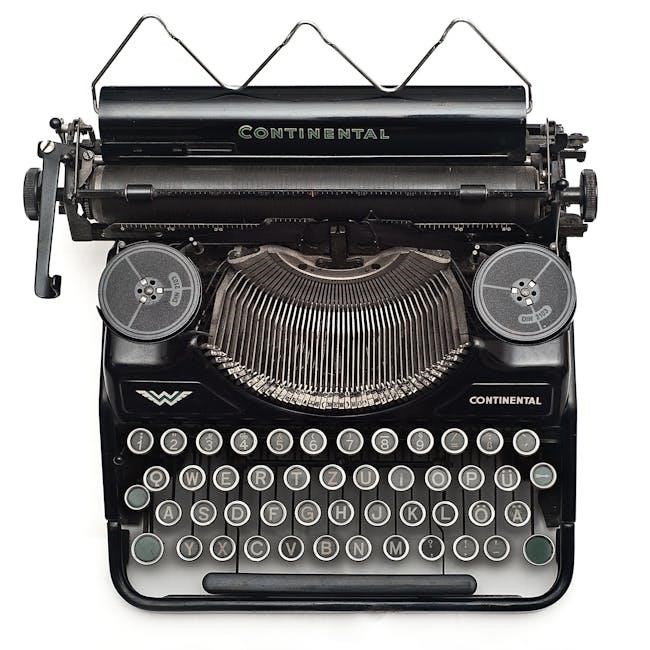Behavior intervention strategies are systematic approaches to address challenging behaviors, focusing on functional assessments, evidence-based practices, and positive reinforcement to create supportive environments for behavior change and skill development.
Overview of Behavior Intervention Plans (BIPs)
A Behavior Intervention Plan (BIP) is a detailed, individualized plan designed to address challenging behaviors by identifying their causes and implementing evidence-based strategies. It typically includes functional assessments, replacement behaviors, and positive reinforcement techniques. The BIP outlines specific interventions, such as environmental modifications or skill teaching, to reduce problem behaviors and promote positive outcomes. Monitoring progress and adjusting strategies ensures the plan’s effectiveness and adaptability to individual needs.
Importance of Evidence-Based Strategies
Evidence-based strategies are crucial in behavior intervention plans as they ensure interventions are backed by scientific research, increasing their effectiveness. These methods, such as positive reinforcement and functional communication training, have been proven to address challenging behaviors successfully. By relying on data and proven practices, educators and practitioners can implement interventions that lead to meaningful behavior change, reducing the reliance on less effective or untested approaches. This approach also fosters consistency and accountability in supporting individuals with behavioral needs.
Key Components of a Comprehensive BIP
A comprehensive Behavior Intervention Plan (BIP) includes clear descriptions of problem behaviors, functional assessments, and evidence-based strategies. It outlines replacement behaviors and interventions tailored to the individual’s needs. The plan also specifies data collection methods to monitor progress and criteria for evaluating effectiveness. Collaboration among educators, families, and professionals ensures consistency and support. Regular reviews and adjustments based on outcomes are essential to maintain effectiveness and address evolving needs, ensuring the BIP remains a dynamic and responsive tool for behavior change.

Understanding Problem Behaviors
Problem behaviors often stem from underlying causes such as unmet needs, environmental triggers, or skill deficits. Identifying the function and context of these behaviors is crucial for effective intervention.
Functional Assessment of Behavior
A functional assessment of behavior identifies the purpose or function behind challenging actions, such as escaping tasks, seeking attention, or gaining access to preferred items. This process involves observing behavior patterns, gathering data on triggers and consequences, and analyzing the environment. Understanding the function allows for targeted interventions that address the root cause, reducing problem behaviors by teaching alternative skills and modifying environments to support positive outcomes.
Identifying Maintaining Consequences
Identifying maintaining consequences involves determining the events that follow problem behaviors and reinforce their occurrence. These consequences, such as attention, escape, or access to preferred items, can be positive or negative reinforcers. By understanding what maintains the behavior, interventions can be designed to remove or alter these reinforcing events, reducing the likelihood of the behavior recurring. This step is crucial for developing effective behavior intervention plans that address the underlying causes of challenging actions.
Link Between Behavior and Environment
The environment plays a significant role in shaping behaviors, as individuals respond to their surroundings. Factors such as classroom layout, noise levels, and availability of materials can influence behavior. Identifying these environmental triggers helps in modifying settings to prevent problematic behaviors and promote positive actions. By adjusting environmental variables, interventions can create supportive contexts that reduce challenges and encourage appropriate behavior, fostering a more conducive learning or living environment for individuals.

Positive Behavioral Interventions and Supports (PBIS)
PBIS is a proactive, multi-tiered framework using evidence-based strategies to create positive school environments, improving behavior and academic outcomes through prevention and intervention.
Tier 1: Universal Prevention Strategies
Tier 1 strategies focus on preventing problem behaviors by establishing a positive school-wide environment. Techniques include classroom accommodations like preferential seating, clear expectations, and positive reinforcement. These interventions aim to support all students by promoting a culture of respect and engagement. By addressing behaviors at the universal level, educators can reduce disruptions and foster an environment conducive to learning. These strategies are foundational and essential for creating a supportive atmosphere for all students, ensuring equity and consistency in behavior management practices across the entire school community effectively and sustainably over time.
Tier 2: Targeted Interventions
Tier 2 interventions are designed for students requiring additional support beyond universal strategies. These targeted approaches include small-group instruction, social skills training, and brief behavioral contracts. Interventions like check-in/check-out systems and self-monitoring tools help students manage specific behaviors. By addressing the unique needs of at-risk students, Tier 2 strategies aim to prevent escalation and promote positive behavior without intensive individualization. These interventions are crucial for bridging the gap between universal and intensive supports, ensuring tailored assistance to students who need more targeted behavioral guidance and encouragement to thrive academically and socially.
Tier 3: Intensive, Individualized Support
Tier 3 provides intensive, individualized support for students with severe or persistent behavioral challenges. This level involves creating detailed behavior intervention plans tailored to the student’s specific needs. Strategies include one-on-one coaching, functional communication training, and crisis intervention. Regular progress monitoring ensures adjustments are made to maintain effectiveness. Collaboration between educators, families, and specialists is essential to provide comprehensive support, addressing underlying causes of behavior and fostering long-term positive outcomes for students requiring the highest level of intervention and care to succeed in their educational journey and beyond.

Behavioral Intervention Techniques
Behavioral intervention techniques focus on evidence-based strategies to address challenging behaviors, emphasizing positive reinforcement, skill development, and functional assessments to create tailored support plans for individuals.
Positive Reinforcement Strategies
Positive reinforcement strategies focus on increasing desired behaviors by associating them with rewarding outcomes. Techniques include token economies, verbal praise, and tangible rewards. These methods encourage repetition of positive actions, creating a supportive environment for behavior change. Consistent implementation across settings ensures effectiveness. Personalized reinforcement strategies cater to individual preferences, enhancing motivation. Evidence-based practices highlight the importance of immediate and meaningful rewards to strengthen desired behaviors, reducing challenging ones over time. This approach is foundational in behavior intervention plans, promoting long-term positive outcomes.
Reduction of Problem Behaviors
Reducing problem behaviors involves identifying their underlying causes and implementing evidence-based interventions. Functional assessments help determine the purpose of challenging behaviors, guiding targeted strategies. Techniques such as functional communication training (FCT) and differential reinforcement of alternative behaviors (DRA) are effective. These approaches focus on replacing problem behaviors with more appropriate ones. Consistent application across environments ensures greater success. By addressing the root causes and teaching alternative skills, these strategies minimize problem behaviors and promote positive, sustainable change in individuals.
Teaching Alternative Behaviors
Teaching alternative behaviors is a cornerstone of effective intervention, focusing on replacing problem behaviors with socially acceptable alternatives. This approach complements behavior reduction by equipping individuals with positive skills. Techniques like modeling, role-playing, and positive reinforcement encourage the adoption of desired behaviors. By identifying the function of problem behaviors, interventions can target specific needs, fostering meaningful behavior change. This method not only reduces challenging behaviors but also enhances overall social and adaptive functioning, promoting long-term positive outcomes in various settings.
Preventative Strategies
Preventative strategies focus on minimizing problem behaviors by modifying environments, setting clear expectations, and providing choices to reduce conflict, fostering a positive and proactive behavioral environment.
Environmental Modifications
Environmental modifications involve altering physical or social settings to reduce triggers for problem behaviors. Adjusting seating arrangements, reducing noise levels, and organizing workspaces can create a more supportive environment. Providing preferential seating or visual barriers helps minimize distractions. Modifying task difficulty or length can also reduce frustration. These changes aim to create a setting that fosters focus and positive behavior, addressing underlying causes of behavioral challenges. By tailoring the environment to individual needs, interventions become more effective in promoting appropriate behavior and reducing conflicts. This proactive approach enhances learning and social interactions, ensuring a conducive atmosphere for all individuals.
Setting Clear Expectations
Setting clear expectations is a fundamental strategy in behavior intervention plans. By establishing specific, measurable, and positive behavioral goals, individuals understand what is expected of them. Visual schedules, behavior charts, and explicit instructions help clarify these expectations. Consistent communication ensures that everyone is aware of the standards, reducing confusion and misbehavior. When expectations are clear, individuals are more likely to meet them, fostering a structured and predictable environment that supports positive behavior and accountability. This approach is essential for creating a foundation for successful behavioral interventions.
Providing Choices to Reduce Conflict
Providing choices empowers individuals, reducing conflict and promoting autonomy. Offering options within structured boundaries allows individuals to feel in control, decreasing defiance. For example, choices like “Would you like to complete the task now or after a short break?” respect the person’s autonomy while maintaining expectations. This strategy is particularly effective in de-escalating potential conflicts and encouraging cooperation. By involving individuals in decision-making, choice-based interventions foster a sense of ownership and responsibility, leading to more positive behavioral outcomes and a reduction in challenging behaviors. This approach is widely recognized as a proactive intervention tool.

Functional-Based Interventions
Functional-based interventions focus on understanding the underlying causes of behaviors to address them effectively. They use evidence-based strategies to teach alternative skills and reduce problematic behaviors.
Replacement Behavior Strategies
Replacement behavior strategies focus on identifying problem behaviors and teaching alternative actions that serve the same purpose. These strategies aim to reduce challenging behaviors by providing individuals with more appropriate ways to communicate or achieve their goals. By understanding the function of the behavior, interventions can be tailored to teach new skills, such as communication or problem-solving, to replace the problematic ones. Reinforcement is often used to encourage the adoption of these new behaviors, ensuring they are both effective and sustainable over time.
Functional Communication Training (FCT)
Functional Communication Training (FCT) is a widely used intervention strategy that teaches individuals to communicate effectively. By identifying the underlying causes of problem behaviors, FCT replaces them with appropriate communication skills. For example, if a student acts out to gain attention, FCT teaches them to request attention verbally. This approach improves social interactions and reduces challenging behaviors. Research shows FCT is particularly effective for individuals with autism, enhancing their ability to express needs and emotions constructively. Consistent implementation ensures long-term success in various settings, including schools and homes. This method is both practical and impactful, making it a cornerstone of behavior intervention plans.
Self-Monitoring and Self-Management
Self-monitoring and self-management are empowering strategies that help individuals regulate their own behaviors. These techniques involve teaching individuals to observe, record, and evaluate their actions. For instance, students might track their behavior using charts or checklists, fostering awareness and accountability. Self-management extends this by encouraging individuals to set goals and use reinforcement, such as rewards, to maintain positive behavior. Research highlights the effectiveness of these strategies in promoting independence and reducing problem behaviors, particularly in educational settings. They are often used alongside other interventions to enhance overall behavior management plans and improve long-term outcomes.

Behavioral Interventions for Specific Populations
Behavioral interventions are tailored for specific populations, such as students with Autism Spectrum Disorder, trauma-affected individuals, and those with ADHD, focusing on their unique needs and challenges.
Strategies for Students with Autism Spectrum Disorder
Students with Autism Spectrum Disorder (ASD) benefit from tailored strategies like structured routines, visual supports, and sensory integration. Positive Behavioral Interventions and Supports (PBIS) and Applied Behavior Analysis (ABA) techniques are effective. Functional assessments help identify triggers, guiding interventions. Teaching alternative behaviors and using communication training reduce problem behaviors. Incorporating interests and preferences enhances engagement. Collaborative efforts with families and interdisciplinary teams ensure consistency and progress, fostering a supportive learning environment tailored to individual needs.
Interventions for Trauma-Affected Individuals
Trauma-informed behavior interventions focus on creating safe, predictable environments. Strategies include de-escalation techniques, emotional regulation training, and sensory integration. Building trust through consistent, empathetic interactions is crucial. Incorporating mindfulness and relaxation exercises helps reduce stress. Collaboration with mental health professionals and caregivers ensures comprehensive support. Evidence-based practices like trauma-focused CBT and psychological first aid are effective. These interventions prioritize emotional well-being, fostering resilience and promoting positive behavior change in individuals affected by trauma.
Behavioral Support for Students with ADHD
Students with ADHD benefit from structured, consistent behavioral support. Strategies include clear expectations, visual schedules, and positive reinforcement for on-task behavior. Environmental modifications, such as preferential seating, reduce distractions. Teaching self-monitoring skills and providing frequent breaks helps manage attention. Collaborative efforts with parents and mental health professionals ensure a cohesive approach. Incorporating movement breaks and hands-on activities addresses hyperactivity and engagement. These interventions aim to enhance focus, reduce impulsivity, and foster academic success in students with ADHD.

Monitoring and Evaluating Intervention Effectiveness
Monitoring and evaluating intervention effectiveness involves consistent data collection and progress tracking to assess behavior changes and determine the need for strategy adjustments.
Data Collection Methods
Data collection methods are essential for tracking behavior changes. Common techniques include frequency counts, duration recording, interval sampling, and rating scales. Frequency counts measure how often a behavior occurs, while duration recording captures how long it lasts. Interval sampling involves observing behavior at set intervals, and rating scales provide a quantitative measure of behavior severity. These methods ensure objective data collection, helping to evaluate intervention effectiveness and inform adjustments to strategies. Accurate data collection is crucial for making informed decisions.
Progress Monitoring Tools
Progress monitoring tools enable consistent tracking of student behavior and intervention effectiveness. Tools such as behavior rating scales, progress charts, and daily behavior reports provide visual and measurable data. These tools help identify trends, celebrate progress, and pinpoint areas needing adjustment. Regular use ensures interventions remain targeted and effective, fostering continuous improvement in student behavior and learning outcomes. By leveraging these tools, educators can make data-driven decisions to support individualized behavior plans and overall student success. Accurate monitoring is key to achieving long-term behavior change.
Adjusting Strategies Based on Outcomes
Adjusting intervention strategies based on outcomes ensures effectiveness and responsiveness to individual needs. Regularly reviewing data from progress monitoring tools allows educators to identify what works and what requires modification. If a strategy isn’t yielding desired results, it may be necessary to refine techniques, replace ineffective methods, or intensify support. Flexibility is key, as outcomes often reveal the need for tailored adjustments. By continuously assessing and adapting, interventions remain aligned with goals, fostering meaningful behavior change and improved student outcomes. Ongoing evaluation ensures strategies evolve to meet changing needs. Team collaboration and documentation of changes are essential for sustained success.

Collaboration and Teamwork in BIP Development
Collaboration and teamwork in BIP development involve teachers, staff, families, and specialists working together to ensure comprehensive support and consistency across all settings for students.
Role of Teachers and Staff
Teachers and staff play a crucial role in implementing behavior intervention strategies, ensuring consistency and fidelity in execution. They monitor progress, provide feedback, and adapt strategies as needed. Their active participation in professional development and collaboration with other team members is essential for creating a supportive learning environment. By fostering positive relationships and using evidence-based practices, educators contribute significantly to the success of behavior intervention plans, helping students achieve social and academic goals effectively. Consistency and teamwork are key to their impact.
Family and Caregiver Involvement
Family and caregiver involvement is vital for the success of behavior intervention strategies. They provide valuable insights into the individual’s behavior and collaborate with educators to ensure consistency across settings. Training and resources are often provided to help caregivers implement strategies effectively. Their active participation in developing and monitoring behavior plans fosters a cohesive support system, enhancing the individual’s ability to generalize skills and behaviors. Open communication and shared goals between families and professionals are key to achieving lasting positive outcomes and sustainable behavior change.
Interdisciplinary Team Collaboration
Interdisciplinary team collaboration is essential for developing effective behavior intervention strategies. Professionals from various fields, including educators, psychologists, and healthcare providers, work together to share expertise and align approaches. This collaborative process ensures comprehensive support tailored to the individual’s needs. By integrating diverse perspectives, teams can identify root causes of behaviors and design strategies that promote skill development and reduce challenges. Consistent communication and shared goals among team members foster a cohesive approach, ultimately leading to better outcomes and empowering individuals to thrive in various environments.

Common Challenges in Implementing BIPs
Challenges in implementing BIPs include inconsistent application, lack of training, and resistance to change, requiring strong collaboration and evidence-based strategies for success.
Barriers to Consistent Implementation
Barriers to consistent implementation of BIPs often stem from inadequate training, leading to inconsistent application of strategies. Additionally, the complexity of functional assessments and lack of resources can hinder fidelity. Environmental factors, such as classroom setup, can also pose challenges. Furthermore, without ongoing support and clear communication among teams, sustaining effective interventions becomes difficult, highlighting the need for comprehensive training and collaborative efforts to overcome these obstacles.
Addressing Resistance to Change
Addressing resistance to change requires understanding the root causes, such as fear of failure or lack of buy-in. Effective communication and stakeholder involvement help alleviate concerns. Providing professional development and demonstrating the benefits of interventions can increase acceptance. Active listening and collaborative problem-solving foster a supportive environment, encouraging openness to new strategies. Recognizing and rewarding efforts to adapt can also motivate individuals to embrace change, ensuring a smoother transition to implementing behavior intervention plans successfully.
Ensuring Fidelity in Strategy Execution
Ensuring fidelity in strategy execution involves consistent implementation of behavior intervention plans. Training, monitoring, and feedback are critical to maintaining accuracy. Regular progress checks and adjustments ensure strategies are applied as intended. Clear communication and standardized protocols help reduce variability. Using validated tools and involving stakeholders in oversight enhances accountability. High fidelity execution maximizes the effectiveness of interventions, leading to better behavioral outcomes and sustainable results for individuals with challenging behaviors.

Legal and Ethical Considerations
Ensuring fidelity in strategy execution requires consistent implementation of behavior intervention plans. Training, monitoring, and feedback are critical to maintaining accuracy. Regular progress checks and adjustments ensure strategies are applied as intended. Clear communication and standardized protocols help reduce variability. Using validated tools and involving stakeholders in oversight enhances accountability. High fidelity execution maximizes the effectiveness of interventions, leading to better behavioral outcomes and sustainable results for individuals with challenging behaviors.
Compliance with Special Education Laws
Compliance with special education laws ensures that behavior intervention strategies align with legal requirements. The Individuals with Disabilities Education Act (IDEA) and Section 504 of the Rehabilitation Act mandate personalized plans. Schools must develop and implement BIPs that respect student rights, ensuring a free and appropriate public education (FAPE). Legal frameworks require procedural safeguards, including parental involvement and due process. Compliance guarantees that interventions are ethically sound and legally defensible, protecting both students and educators. Adherence to these laws fosters a supportive and inclusive educational environment.
Ethical Use of Behavioral Interventions
Ethical use of behavioral interventions requires prioritizing student well-being, dignity, and autonomy. Interventions must be evidence-based, non-intrusive, and free from harm. Professionals should consider cultural and individual differences, ensuring strategies are person-centered. Consent from guardians and students is essential, with clear communication about intervention goals and methods. Confidentiality and transparency are critical to building trust. Ethical practices also involve ongoing monitoring and adaptation of strategies to ensure effectiveness and alignment with the student’s best interests, fostering a respectful and supportive environment for behavior change.
Protecting Student Rights and Dignity
Protecting student rights and dignity ensures interventions respect individual values and freedoms. Strategies must avoid humiliation or stigmatization, emphasizing positive approaches. Students’ privacy and autonomy should be upheld, with interventions tailored to their unique needs. Legal and ethical standards guide actions, ensuring fairness and equity. Schools must provide accessible grievance processes and involve students in decision-making. Safeguarding dignity fosters a respectful environment, promoting social-emotional growth and self-esteem, essential for academic and personal success while adhering to legal and human rights frameworks.
Effective behavior intervention strategies promote positive outcomes, requiring continuous learning and adaptation. Future directions include advancing evidence-based practices and expanding resource accessibility to support diverse needs.
Effective intervention strategies include positive reinforcement, functional assessments, and teaching alternative behaviors. PBIS frameworks and evidence-based practices are essential for addressing challenging behaviors. Environmental modifications, clear expectations, and providing choices reduce conflict. Replacement behaviors and functional communication training (FCT) are key for skill development. Progress monitoring ensures interventions are adjusted for optimal outcomes. Collaboration among teachers, families, and interdisciplinary teams enhances consistency and effectiveness. These approaches create supportive environments, fostering positive behavior and reducing problem behaviors, while ensuring interventions are tailored to individual needs and consistently implemented for long-term success.
Future Directions in Behavioral Interventions
Future directions in behavioral interventions emphasize personalized, technology-driven approaches, such as AI-powered tools for real-time data analysis and telehealth platforms for remote support. There is a growing focus on cultural adaptability, ensuring strategies are tailored to diverse populations. Sustainability of interventions through ongoing training and community engagement is critical. Additionally, integrating mental health support with behavioral strategies and fostering interdisciplinary collaboration will enhance effectiveness. These advancements aim to create holistic, accessible, and impactful solutions for addressing challenging behaviors across various settings;
Resources for Further Learning
Key resources include the Handbook of Behavioral Interventions in Schools, which offers evidence-based strategies, and the “Behavior Intervention Plan Guide” by Odom (2019). The National Technical Assistance Center on Positive Behavioral Interventions and Supports (PBIS) provides downloadable guides and webinars. Additionally, studies by Odom et al. (2018) and Vasuykova (2022) highlight effective intervention techniques. Online platforms like ResearchGate and Google Scholar offer accessible PDFs and research papers on behavior intervention strategies, enabling professionals to stay updated and enhance their practice in supporting diverse behavioral needs.




























































